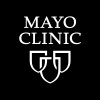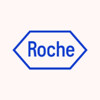
Study to Assess the Pharmacokinetics and Pharmacodynamics of GSK461364 in Subjects With Non-Hodgkins...
LymphomaNon-HodgkinThis is a first time in human study that is being done to determine the maximum tolerated dose and initial pharmacokinetic parameters of GSK461364, given by IV, in adult subjects with solid tumors and Non-Hodgkins lymphoma.

A Study for Patients With Non-Hodgkin's Lymphomas
T-Cell LymphomaB-Cell LymphomaIn this study, all patients will get investigational drug. There will be no comparator drug. This study will evaluate three tumor types: T-cell lymphoma, Indolent B-cell lymphoma, and Aggressive B-cell lymphoma. Each tumor type will include several tumor subtypes: T-cell lymphoma: Peripheral and Cutaneous T-cell lymphoma (PTCL, CTCL) Indolent B-cell lymphoma: Small lymphocytic lymphoma, follicular lymphoma (Gr 1 or 2) and marginal zone lymphoma Aggressive B-cell lymphoma: Primary CNS lymphoma, follicular lymphoma (Gr 3a and 3b) and aggressive lymphoma with prior clinical history of indolent lymphoma.

Two Different Methods of Collecting Stem Cells For an Autologous Stem Cell Transplant in Treating...
LymphomaRATIONALE: It is not yet known which method of stem cell collection is best for patients undergoing an autologous stem cell transplant. PURPOSE: This randomized phase III trial is comparing two different methods of collecting stem cells in patients undergoing stem cell transplant for diffuse large cell lymphoma.

Trial Comparing Chlorambucil to Fludarabine in Patients With Advanced Waldenström Macroglobulinemia...
Waldenström MacroglobulinemiaLymphoplasmacytic Lymphoma1 moreWaldenström's macroglobulinaemia (WM) is a lymphoproliferative disorder characterized by a monoclonal IgM paraprotein and morphological evidence of lymphoplasmacytic lymphoma: the cells are IgM+, IgD+, CD19+ and CD20+ but usually CD5-, CD10- and CD23-. The treatment efficacy is difficult to assess because of the lack of clear diagnostic criteria , good response criteria, and of randomized trials. The actual treatment is Chlorambucil, an alkylating agent. A purine analogue such as Fludarabine has proven its efficacy on 30 % to 80 % as first line therapy This study is a phase II b open, prospective, international multicenter trial (England, Dr Johnson, Dr Catovsky, Australia: Dr Seymour) promoted by the French Cooperative Group on Chronic Lymphoid Leukemia in untreated WM, or closely related disorders ( Lymphoplasmacytic lymphoma or splenic marginal zone lymphoma). 366 patients must be included, among them 180 patients in France. Patients will be stratified according to the lymphoproliferative disorder. The patients will receive Chlorambucil by oral route for 10 days every 28 days (12 cycles) (8 MG/M², 6 MG/M² if patient is more than 75 years old) or Fludarabine by oral route for 5 days every 28 days (6 cycles) (40MG/M², 30 MG/M² if patient is more than 75 years old). The primary objective is to compare the efficacy (response rate) of Chlorambucil to Fludarabine in previously untreated patients. The secondary objectives are the duration of response, the improvement of hematological parameters, the toxicity, the quality of life, the event free survival and the overall survival.

A-dmDT390-bisFv(UCHT1) Immunotoxin Therapy for Patients With Cutaneous T-Cell Lymphoma (CTCL)
T-cell LymphomasT-cell Leukemia3 moreThis is a Phase II clinical trial aimed at treating a subgroup of patients with cutaneous T-cell lymphoma. The drug consists of a toxin, called diphtheria toxin, which is attached to an antibody that can specifically target cancerous T-cells. Our primary objectives are, therefore, to determine the patient subgroup with respect to disease burden who best responds to this experimental drug in treating CD3 positive T cell malignancies. We will be determining how the patient and their disease respond to this research agent. The Clinical Response Data analysis from October 2014 done at the completion of the Phase I portion of A-dmT390-bisFv(UCHT1) fusion protein clinical trial showed that there were 25 evaluable patients who received all 8 doses varying between 2.5 and 11.25 µg/kg per dose. There were responses at all the lower dose levels up to 7.5 µg/kg per dose. The overall response rate was 36% and the complete response rate was 16% (when followed for 6 months). We have identified a subgroup of CTCL patients that have a very high response rate. If we exclude patients whose mSWAT scores never exceeded 50 (50% of skin surface area times a multiplier) and who never had lymph node involvement or stage III disease we are left with 9 patients. This subgroup has an overall response rate of 89% and a complete response rate of 50% (when followed for 6 months). Of these 4 patients currently in complete remission, three are long-term responders. Two are over 6 years in duration and one over 5 years duration. These may represent cures. The long time periods in the transition from partial response to complete response without treatment, 6 months to two years, suggests that the study drug in addition to exerting a direct killing effect on tumor also functions as an immunomodulator.

Phase II Trial of a Chemotherapy Alone Regimen of IV Busulfan (Busulfex), Melphalan and Fludarabine...
LeukemiaMyelodysplastic Syndrome2 moreThe purpose of this research study is:(1) to determine if high doses of chemotherapy without total body irradiation can allow selected stem cells to take and grow,(2) to determine if selected stem cells from the blood or marrow can take and not cause a complication called graft-versus-host disease (GvHD) and (3) to evaluate the side effects of the combination of chemotherapy drugs used for these transplants. In the last 10 years we have developed chemotherapy combinations to be used for this T-cell depleted transplant protocol. By using three chemotherapy drugs (IV busulfan, melphalan and fludarabine), we hope to have a good chemotherapy combination to kill cancer cells, and to make the graft take, without the side effects of total body irradiation. The chemotherapy drugs to be tested in this protocol are busulfan, melphalan and fludarabine, all of which have been used successfully for stem cell transplantation, but not given together as in this specific regimen. This is what is being tested in this study. Our initial trials in the 1980's with T-cell depleted transplants showed less GvHD, but the overall results of the transplants were not better. The reason for this was that the stem cells did not take and engraft in 15% of our adult patients. This failure of the stem cells to take can leave patients without bone marrow or blood cells necessary for life. Most stem cell transplants were done using bone marrow (BMA) obtained from the donors. However, if we give a medication called G-CSF by shots to the donor, we can collect peripheral blood stem cells (PBSC) and use them for transplant. The advantage of this approach is that we can collect 2-20 times more stem cells than that obtained from the marrow. It has been proven that a larger number of stem cells in the graft make it more difficult for the patient to reject the stem cells. Some donors may be too small to provide peripheral blood stem cells or they may not want to take G-CSF shots. In these cases the donors will have their marrow collected in the operating room under general anesthesia. Stem cell transplants can lead to a condition known as acute graft-versus-host disease or GvHD. This disease is caused by an assault by certain cells in the marrow or blood (T-cells) of the donor (graft) against your body (the host). These T-cells see your body as foreign and attack it. The disease causes a skin rash, liver disease, and diarrhea. Methods were developed at this institution to prevent GvHD. These methods take out most of the T-cells (responsible for GvHD) from the marrow or blood stem cells before transplant. This is called "T-cell depletion" or "stem cell selection". In this hospital, we use two types of methods of T-cell depletion: one method is used with peripheral blood stem cells and one for bone marrow. Both these techniques have been successful in preventing both acute and chronic GvHD. You will receive a T-cell depleted stem cell transplant.

Zevalin/BEAM/Rituximab vs BEAM/Rituximab With or Without Rituximab in Autologous Stem Cell Transplantation...
Diffuse Large Cell LymphomaLymphomaThe goal of this clinical research study is to learn if the addition of 90Y Zevalin to BEAM chemotherapy (carmustine, etoposide, cytarabine, and melphalan) and rituximab is more effective than the combination of BEAM and rituximab alone in patients with lymphoma who receive a stem cell transplant.

Chemotherapy With Monoclonal Antibody and Radioimmunotherapy for High-Risk B-Cell Non-Hodgkins Lymphoma...
LymphomaB-CellThe purpose of this study is to determine whether using high-dose chemotherapy, monoclonal antibodies, and targeted radioimmunotherapy will slow the progression of disease in patients with high-risk Non-Hodgkin's Lymphoma (NHL).

Fludarabine, Mitoxantrone, and Dexamethasone (FND) Plus Rituximab for Lymphoma Patients
LymphomaThe goal of this clinical research study is to compare chemotherapy given with rituximab to chemotherapy followed by rituximab. The safety of both treatment schedules will be studied. Laboratory tests of genetic changes in blood and bone marrow before and during the study will also be monitored.

GAUSS: A Study of Obinutuzumab (RO5072759) in Patients With Indolent Non-Hodgkin's Lymphoma
Non-Hodgkin's LymphomaThis study will investigate the efficacy of weekly intravenous obinutuzumab [GA101 (RO5072759)] monotherapy, in patients with relapsed CD20+ indolent Non-Hodgkin's Lymphoma. Patients will be randomized to receive either GA101 or rituximab, given as four weekly infusions. At the conclusion of the initial trial patients may be eligible to continue therapy up to 24 months. The anticipated time on study treatment is 3- 24 months, and the target sample size is 100-500 individuals.
